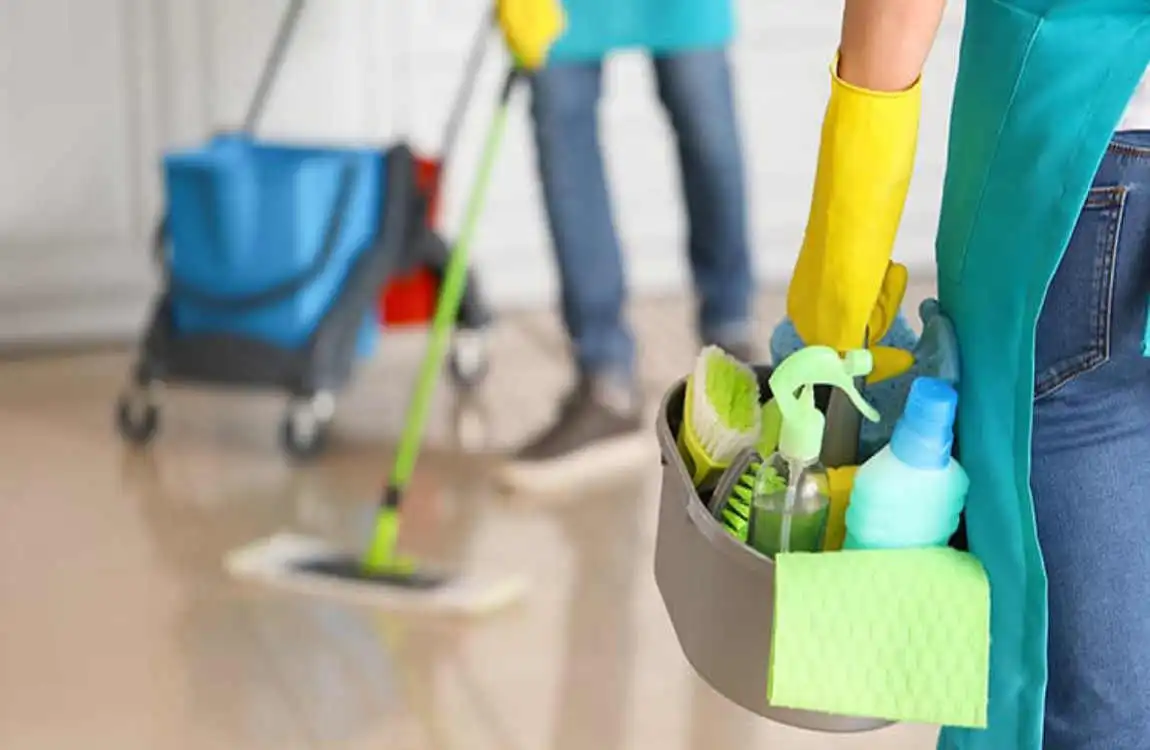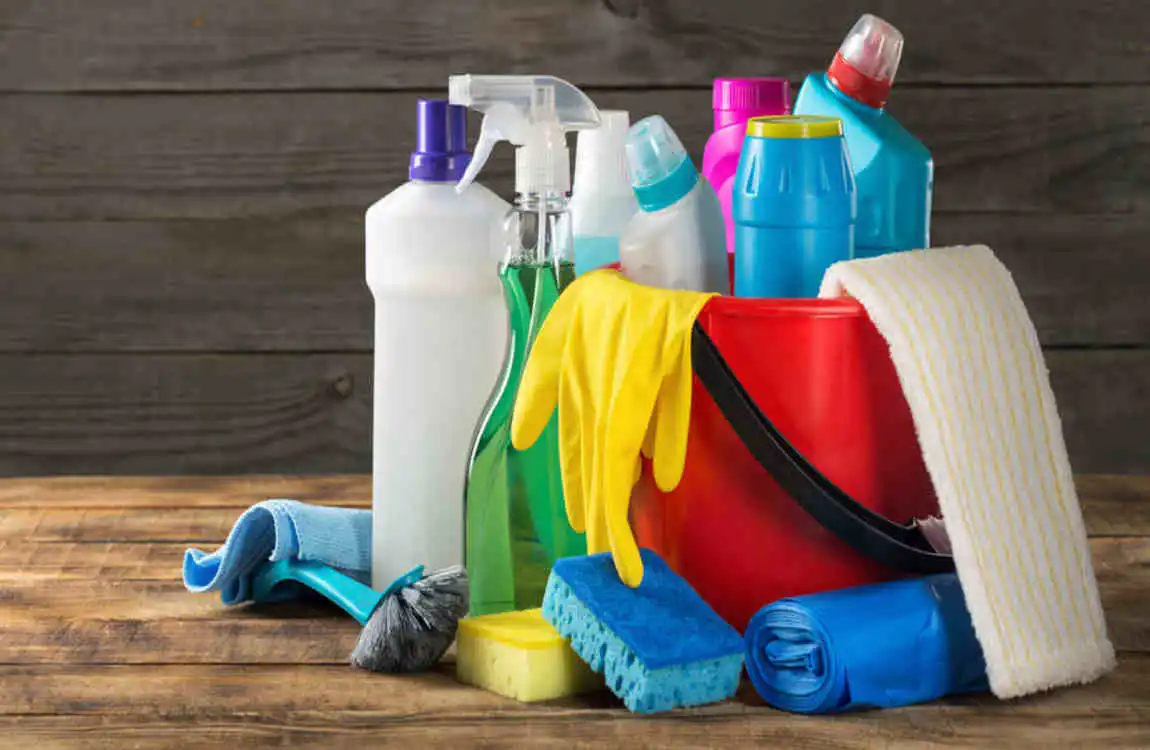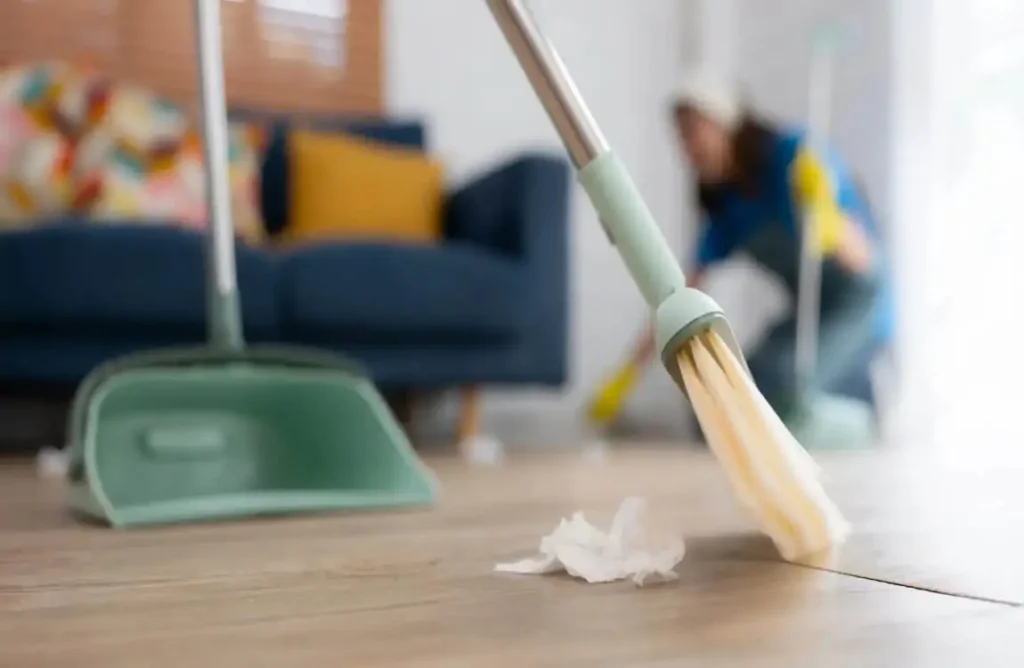Deep cleaning your home is an essential practice that goes beyond regular tidying to remove deep-seated dirt, dust, and grime accumulating over time. This comprehensive process refreshes and rejuvenates your living space, creating a sparkling, organized environment that supports better hygiene and comfort. With a well-structured step-by-step approach, deep cleaning becomes manageable and rewarding, helping you maintain a healthy, comfortable home for you and your family.
Each area receives focused attention—cleaning appliances and surfaces in the kitchen, scrubbing tiles and sanitizing fixtures in bathrooms, dusting and vacuuming living spaces, refreshing bedding and organizing closets in bedrooms, and polishing windows and mirrors for clarity. This method ensures every corner is thoroughly cleaned and organized, leaving your home sparkling and welcoming.
Preparing for Your Deep Clean

Gather your cleaning supplies checklist.
Before you start deep cleaning, make sure you have all the necessary supplies on hand. Here’s a checklist to help you get started:
- Disinfectants
- Microfiber cloths
- Vacuum cleaner
- Mop
- Gloves
- Bucket
- Cleaning brushes
- Scrubbing pads
Declutter first to make cleaning easier
Clutter can make cleaning feel like an impossible task. Take some time to go through your home and get rid of anything you no longer need or use. Donate, sell, or toss items to create a more streamlined space.
Create a cleaning schedule or timeline.
Deep cleaning is a big job, so it’s helpful to break it down into smaller, manageable tasks. Create a schedule or timeline to keep yourself on track and motivated. You can tackle one room per day or focus on specific tasks each day.
Dress comfortably and play motivating music or podcasts
Deep cleaning can be physically demanding, so make sure you’re dressed comfortably and have the proper footwear. Put on your favorite music or podcast to keep yourself entertained and motivated throughout the process.
How preparation sets the stage for an efficient clean
By taking the time to prepare for your deep clean, you’ll set yourself up for success. You’ll have all the supplies you need, a clear plan of action, and a positive mindset. With these elements in place, you’ll be able to tackle your deep clean with efficiency and ease.
How to Clean Your Home Step by Step – Room-by-Room Guide
Entrance and Living Room
Dust and wipe all surfaces.
Start by dusting and wiping down all surfaces in your entrance and living room. This includes shelves, tables, and electronics. Use a microfiber cloth and a gentle cleaning solution to remove dust and grime.
Clean upholstery and cushions
If you have upholstered furniture in your living room, it’s essential to give it a good clean. Vacuum the cushions, then use a spot cleaner to treat any stains. For deeper cleaning, consider hiring a professional upholstery cleaner.
Wash or vacuum rugs and carpets.
Rugs and carpets can harbor a lot of dirt and allergens, so it’s essential to give them a thorough clean. If your rugs are machine-washable, toss them in the washing machine. Otherwise, use a vacuum cleaner with a beater bar to remove dirt and debris.
Clean light fixtures and ceiling fans
Light fixtures and ceiling fans can accumulate significant dust over time. Use a microfiber cloth and a gentle cleaning solution to wipe them down. For hard-to-reach areas, use a step ladder and a long-handled duster.
Organize magazines, remotes, and decor items.
Finally, take some time to organize the items in your entrance and living room. Put away magazines, organize remotes, and declutter any decor items that are no longer serving you. A clutter-free space will feel more inviting and relaxing.
Kitchen
Clear countertops and wipe them down thoroughly
Start by clearing your kitchen countertops and wiping them down thoroughly. Use a disinfectant to kill bacteria and other germs. Don’t forget to clean the backsplash and any other surfaces that come into contact with food.
Deep clean appliances
Your kitchen appliances work hard to keep you fed and nourished, so it’s essential to give them a deep clean. Start by cleaning your oven, microwave, and refrigerator (inside and out). Use a gentle cleaning solution and a microfiber cloth to remove grime and stains.
Scrub sink and faucet
Your kitchen sink and faucet can harbor a lot of bacteria, so it’s essential to give them a good scrub. Use a gentle cleaning solution and a scrubbing brush to remove stains and grime. Don’t forget to clean the drain and any other hard-to-reach areas.
Clean cabinet fronts and handles
Your kitchen cabinets can accumulate a lot of grime and fingerprints over time. Use a gentle cleaning solution and a microfiber cloth to wipe down the cabinet fronts and handles. For stubborn stains, use a scrubbing brush or a magic eraser.
Mop and disinfect floors.
Finally, mop and disinfect your kitchen floors to remove any dirt, grime, or bacteria. Use a gentle cleaning solution and a microfiber mop to get the job done. Don’t forget to clean under the refrigerator and any other hard-to-reach areas.
Dispose of expired food and trash safely.
As you’re deep cleaning your kitchen, take some time to go through your pantry and refrigerator. Toss any expired food or items that are no longer good. Make sure to dispose of trash safely and hygienically.
Bathrooms
Clean and disinfect toilets, showers, bathtubs, and sinks
Your bathroom is a breeding ground for bacteria and germs, so it’s essential to give it a thorough clean. Start by cleaning and disinfecting your toilet, shower, bathtub, and sink. Use a gentle cleaning solution and a scrubbing brush to remove stains and grime.
Remove soap scum and hard water stains.
Soap scum and hard-water stains can be a real pain to remove, but it’s essential to address them during your deep clean. Use a gentle cleaning solution and a scrubbing brush to remove these stubborn stains. For really tough stains, you should use a specialized cleaner.
Wipe mirrors and polish chrome fixtures.
Your bathroom mirrors and chrome fixtures can accumulate fingerprints and water spots over time. Use a gentle cleaning solution and a microfiber cloth to wipe them down and polish them to a shine.
Organize products and discard empty containers.
Take some time to organize your bathroom products and discard any empty containers. A clutter-free bathroom will feel more relaxing and spa-like.
Launder bath mats and shower curtains.
Finally, don’t forget to launder your bath mats and shower curtains. These items can harbor a lot of bacteria and mildew, so it’s essential to give them a good wash. Use a gentle detergent and hot water to kill any germs or bacteria.
Bedrooms
Dust furniture, baseboards, and window sills
Start by dusting your bedroom furniture, baseboards, and window sills. Use a microfiber cloth and a gentle cleaning solution to remove dust and grime. Don’t forget to clean any hard-to-reach areas, like the tops of bookshelves or the backs of dressers.
Wash bedding and curtains.
Your bedding and curtains can accumulate a lot of dust and allergens over time, so it’s essential to give them a good wash. Use a gentle detergent and hot water to kill any germs or bacteria. Don’t forget to wash your pillowcases, too!
Organize closets and donate unused clothes.
Take some time to go through your closets and organize your clothes. Donate any items that you no longer wear or need. A clutter-free closet will make getting dressed in the morning so much easier.
Vacuum floors and under the bed
Finally, vacuum your bedroom floors and the area under the bed to remove dust, dirt, and allergens. Use a vacuum cleaner with a beater bar to get the job done. Don’t forget to clean any hard-to-reach areas, like the corners of the room or under the dresser.
Air out the room for better ventilation
After you’ve finished deep cleaning your bedroom, take some time to air it out. Open the windows and let in some fresh air. This will help improve ventilation and create a more relaxing, comfortable space.
Special Deep Cleaning Tips for Hard-to-Reach Places
Cleaning vents, blinds, and behind large furniture
Some areas of your home can be tricky to clean, but it’s essential to tackle them during your deep clean. Use a long-handled duster to clean your vents and blinds. For behind large furniture, use a vacuum cleaner with a long hose attachment.
How to clean under appliances and heavy furniture safely
Cleaning under appliances and heavy furniture can be challenging, but it’s essential to do so safely. Use a vacuum cleaner with a long hose attachment to reach under these items. If you need to move heavy furniture, make sure to have a helper and use proper lifting techniques.
Tips for removing mold and mildew
Mold and mildew can be a real problem in damp areas of your home, like the bathroom or basement. To remove mold and mildew, use a gentle cleaning solution and a scrubbing brush. For stubborn stains, you should use a specialized cleaner.
Cleaning walls and ceilings without damage
Your walls and ceilings can accumulate a lot of dust and grime over time, but it’s essential to clean them without causing damage. Use a gentle cleaning solution and a microfiber cloth to wipe down your walls and ceilings. For hard-to-reach areas, use a long-handled duster.
Eco-Friendly and Safe Cleaning Methods

Natural cleaning solutions to use at home
Did you know that you can use natural ingredients to clean your home? Vinegar, baking soda, and lemon are all powerful cleaning agents that are safe for your family and the environment. Use these ingredients to create your own cleaning solutions and save money on harsh chemicals.
Avoiding harsh chemicals for family and pet safety
Harsh chemicals can harm your family and pets, so it’s essential to avoid them whenever possible. Instead, opt for natural cleaning solutions or eco-friendly cleaning products. These options are just as effective at cleaning your home, but they’re much safer for everyone involved.
DIY cleaning recipes for different surfaces
There are so many DIY cleaning recipes out there, and they’re perfect for different surfaces in your home. For example, you can use a mixture of vinegar and water to clean your windows, or a paste of baking soda and water to scrub your sinks. Experiment with different recipes to find what works best for you.
Benefits of using microfiber cloths vs. paper towels
Microfiber cloths are a game-changer for cleaning your home. They’re reusable, eco-friendly, and much more effective at cleaning than paper towels. Plus, they can be washed and reused, which saves you money in the long run. Make the switch to microfiber cloths and see the difference for yourself!
Organizing After Deep Cleaning
Decluttering strategies for maintaining a tidy home
Decluttering is an ongoing process, but it’s essential for maintaining a tidy home. Set aside time each week to go through your belongings and get rid of anything you no longer need or use. Donate, sell, or toss items to create a more streamlined space.
Storage solutions and labeling tips
Storage solutions can make a big difference in keeping your home organized. Invest in baskets, bins, and shelves to keep your belongings tidy and accessible. Label everything clearly so you know exactly where to find what you need.
How does the organization support easier cleaning in the future
When your home is organized, cleaning becomes so much easier. You’ll spend less time moving things around and more time actually cleaning. Plus, an organized home is less likely to accumulate clutter and dust, which means less cleaning in the long run.
Maintaining daily habits to keep your space clean
Finally, it’s important to maintain daily habits to keep your space clean. Make your bed every morning, do the dishes after every meal, and put things away when you’re done using them. These small habits will make a big difference in keeping your home tidy and organized.
Recommended Cleaning Tools and Products for a Deep Clean
Must-have tools for effective deep cleaning
When it comes to deep cleaning, having the right tools can make all the difference. Here are some must-have tools for an effective deep clean:
- Vacuum cleaner with attachments
- Microfiber cloths
- Scrubbing brushes
- Mop and bucket
- Long-handled duster
- Cleaning caddy
Product recommendations for various surfaces and jobs
Different surfaces and jobs require different cleaning products. Here are some recommendations to help you get started:
Surface/Job Recommended Product
Windows , Vinegar, and water solution
Sinks Baking soda and water paste
Toilets : Eco-friendly toilet bowl cleaner
Floors Gentle floor cleaner
Upholstery Spot Cleaner
How investing in quality tools saves time and effort
Investing in quality cleaning tools can save you time and effort in the long run. High-quality tools are more durable, practical, and easy to use. Plus, they’ll last longer, which means you won’t have to replace them as often. It’s worth spending a little extra money to get the best tools for the job.
How Often to Deep Clean Your Home
Suggested frequency for deep cleaning each room
How often should you deep clean your home? It depends on your lifestyle and the specific rooms in question. Here are some suggested frequencies for deep cleaning each room:
- Entrance and living room: Every 3-6 months
- Kitchen: Every 1-3 months
- Bathrooms: Every 1-2 months
- Bedrooms: Every 3-6 months
Signs your home needs a deep clean
Sometimes, it’s obvious when your home needs a deep clean. Other times, the signs are more subtle. Here are some signs that it’s time for a deep clean:
- Dust and grime buildup on surfaces
- Stains and odors in the kitchen or bathrooms
- Clutter and disorganization in any room
- Allergies or respiratory issues that seem to be triggered by your home environment
How seasonal cleaning fits into your routine
Seasonal cleaning is a great way to keep your home fresh and tidy year-round. In the spring, focus on deep cleaning your home to remove winter grime. In the fall, tackle any outdoor cleaning tasks, like washing windows or cleaning gutters. And in the summer and winter, maintain your cleaning routine to keep your home in tip-top shape.
